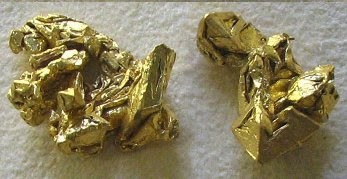Rupee dollar rate is governed by supply demand principle, just like any other thing in the market. For simplicity let us just focus on the two currenices rupee and dollar, while ignoring other currencies. The following are list of people who would buy / sell rupee.
- Importers will buy dollar in order to 'buy' commodities from the US (or other commodities like oil priced in dollar). Thus importers tend to push the value of rupee downwards.
- Exporters, on the other hand tend to push the value of rupee upwards, because either the exporters or those to whom they export will have to buy rupee.
- People / FII's who invest in India buy rupee.
- People /FII's who sell their investments in India and want to take their money out sell rupee.
The above are among the primary forces which govern the rupee dollar rate. Ofcourse there are other types of forces, for example, the importers or exporters might buy/sell rupee for hedging purpose, like almost all IT industries currently do.
In the past few days, FII's have been net sellers in Indian stock market. For example on Sep16, the net amount of equities sold by FII's was approximately 1400 crore rupees, i.e. roughly 3 billion dollars. On 15th September this figure was close to 1000 crore rupees or roughly 2 billion dollars. These figures look significant enough to influence the rupee dollar equation. In addition to high Indian inflation, this may partly explain the consistent fall of rupee in the past couple of weeks.
Inflation can have a severe effect on currency rates. Suppose the expected annual inflation in US is around 4% and that in India is around 12%. Then as far as purchasing power is concerned, the dollar will have 4% lesser value after one year, while the rupee will have 12% lesser value. Naturally, this would lead to a rupee decline. Moreover, high inflation would also affect growth and the foreign inflow of investments and further contribute to declining rupee.
Is the current steep rise of dollar versus rupee sustainable?To me the answer looks no, unless Indian inflation gets out of control, or the claims of RBI / Indian Governemnt on inflation moderation by March are way off. Look at the current financial crisis of US. Lehman Brothers is dead, AIG is in ICU. Many more banks, especially those having high exposure to real estate are bound to collapse. Growth prospects in the US seem to be getting worst. In the long run, although India will also be affected, US Economy looks to be heading towards a much greater downfall. I wont be surprised if the rupee bounces back by 10% or so, as soon as there are convincing signs of inflation moderation in India, say by end of current calendar year. The growth prospects of India, at least as of today are much better than that in the US. Anything positive is greater than any negative number, as simple as that.
Disclaimer : I am not an expert in this topic. These are just my own thoughts for improving my own understanding.
Read more ...




